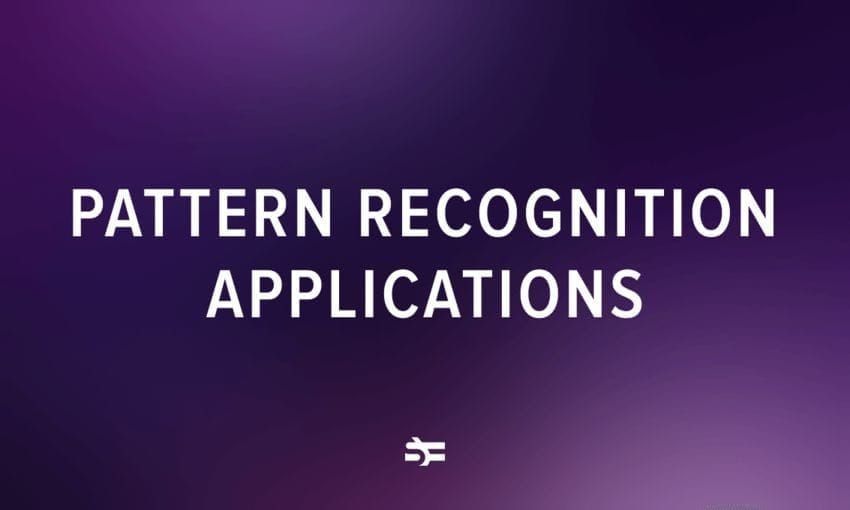In a recent interview to CBS Mornings, Dr Geoffrey Hinton, the ‘godfather of AI’, shared his concerns about the state of artificial intelligence. The person who has built the first neural nets and dedicated much of his career to the study of artificial intelligence, is worried that AI might eventually become smarter than people, and what happens next is hard to predict.
AI agents make these concerns even more solid. If you go to YouTube and look at what kind of things people are able to realize with GPT-models and some fine-tuning, you will be truly amazed. For example, this guy uses two AI agents to analyze his YouTube channel and write the most efficient titles and video outlines — something that a couple of years ago he would need a whole team of editors for.
In this post, you’ll learn what AI agents are and what they are truly capable of. You’ll also learn how to build an AI agent suitable for your goals.
What does agency mean?
Before we start talking about artificial intelligence agents, we need to understand what is meant by agency.
Agency is the capacity to act and the manifestation of this capacity. Agent’s mental states and goals cause it to have an intention and work to realize that intention. At the same time, some conceptions of agency imply that agency can exist even when there is no cognitive ability to have a genuine intention dictated by mental states, such as in the case of AI. They rely on the initiation concept of agency, where an agent can act spontaneously or perform somebody else’s command.
To be able to “act,” the agent needs to perceive the environment around it, think, and act. Sensors such as cameras and lidars help machines to sense changes in the environment; engines, also called actuators, control the system’s ability to move and enable it to take action; finally, effectors, such as robotic hands, help to transform that environment.
There are different types of agents:
- Human agent. Humans can perceive the environment, think, and act to transform what’s around them according to their goals. Thanks to their eyes and ears that serve as sensors, heart and brain (as engine), and legs and arms that help them to move around, human agents can realize their intention in the environment, therefore, exercising their agency. When you open an article about AI to learn more and become a better specialist, you’re being a human agent :)
- Robotic agent. Robots usually don’t have their intention (at least, as we know) but exercise agency according to their function invented by humans, for example, to sort defective details from good details in a conveyor. Robots use cameras and lidars to orient in the environment, wheels and engines to move around, and interfaces, robotic hands, and other tools to affect it. When a robotic kitchen hand is requested to make sushi and it starts making it, it exercises its agency.
- Software agent. Software agents rely on user input to orient themselves in the virtual environment. If software agents use AI, they can devise and exercise tasks autonomously. However, the intention to solve a task still comes from the user, not the machine itself. Software agents are connected to the world of the users with keystrokes and monitors and exercise their agency in the virtual environment. When you ask ChatGPT to write your AP Latin essay, it becomes an agent when performing a task.
A software AI agent, which we will primarily focus on, must follow several rules:
- Rule 1: An AI agent must be able to perceive the environment.
- Rule 2: It must use observation to make decisions.
- Rule 3: It must turn its decision into action.
- Rule 4: The action taken by an AI agent must be rational.
Now let us talk about what makes AI agents so unique.
What is an AI agent?
AI agents, virtual or intelligent agents, are software programs that use artificial intelligence and machine learning algorithms to perform tasks and interact with users. They can be programmed to perform various tasks, from writing and editing articles, novels, and code to customer service and medical diagnosis.
Most AI agents come in the form of chatbots or virtual assistants. The interface of an AI agent looks like a chat window where you can communicate with the model in human language and describe your tasks. Some AI agents have a voice interface and understand vocal commands. It makes AI agents extremely easy to use.
AI agents are trained using deep machine learning algorithms. This means they can improve over time and more effectively handle user inquiries. For example, if a user asks a chatbot a question it can’t answer, the program learns from that interaction and improves its response to future inquiries.
Real-world examples of companies successfully implementing AI agents in their operations include Amazon’s Alexa, Apple’s Siri, and Google Assistant. These virtual assistants have become integral to many people’s daily lives, providing personalized recommendations and performing a wide range of tasks.
AI agents can be reactive or proactive.
- Reactive agents take action as a response to stimuli.
- Proactive agents take the initiative according to their goals.
The environment in which an agent operates can be fixed or dynamic.
- Fixed environments have a static set of rules that do not change.
- Dynamic settings are constantly changing and require agents to be adaptable.
In real life, most tasks require agents to be able to operate in dynamic environments.
Types of AI agents
There are five types of artificial intelligence agents. Let’s talk about each of them in detail:
Simple reflex agents
Simple reflex agents are artificial intelligence agents operating on the principle of “if-then” rules. These agents respond to environmental stimuli in a basic way, without consideration of past events or future consequences.
The main components of a simple reflex agent are the sensors, the rules, and the actuators:
- Sensors. The sensors detect the current state of the environment, such as the presence of an object or a temperature change.
- Rules. The rules dictate how the agent should respond to each possible environment state.
- Actuators. The rules dictate the actions to carry out.
For example, a simple reflex agent in a restaurant might monitor if the pizza oven is working. If the sensor detects that the machine has stopped heating, the rule might dictate that the agent should turn off the power to the device and alert a human. The actuator would then carry out these actions.
Simple reflex agents are helpful when the environment is predictable and transparent cause-and-effect relationships exist between environmental stimuli and desired actions. However, they can’t adapt to new situations or learn from past experiences. As such, more complex agents, such as model-based or goal-based agents, are more appropriate for complex tasks.
Model-based reflex agents
Model-based reflex agents are artificial intelligence agents that use a model of the environment to make decisions. These agents are designed to respond to environmental stimuli based on past experiences and future consequences.
For example, a model-based reflex agent in a self-driving car has a representation of the surroundings in the computer but also needs to detect real-life events, such as when a pedestrian is crossing the road. The model would predict the future position of the pedestrian based on their current trajectory and speed. The rule might dictate that the agent slow down or stop to avoid hitting the pedestrian.
Model-based reflex agents are helpful when the environment is complex and unpredictable, and there are many possible cause-and-effect relationships between environmental stimuli and desired actions. They can adapt to new situations and learn from past experiences, making them more flexible than simple reflex agents.
Goal-based agents
Goal-based agents are artificial intelligence agents that use a set of goals to make decisions. The goal formulation component defines the objectives the agent is trying to achieve, and it may involve breaking down complex goals into smaller sub-goals. The problem-solving part generates a plan to achieve the goals, considering any environmental constraints or obstacles.
For example, a goal-based agent in a manufacturing plant needs to optimize production efficiency. The goal formulation component would define the objective of maximizing output while minimizing waste. The problem-solving component would generate a plan for achieving this goal, such as adjusting production schedules or optimizing machine settings.
Goal-based agents are helpful in situations with clear objectives and multiple possible paths to achieving them. They can adapt to changing environments and prioritize goals based on their importance.
Utility-based agents
Utility-based agents are artificial intelligence agents that use a utility function to make decisions. These agents are designed to maximize a specific utility or measure of desirability rather than achieving a particular set of goals. The decision-making module uses the utility function to evaluate different actions and select the one maximizing utility.
For example, a utility-based agent in a self-driving car can aim to maximize passenger safety while also minimizing travel time. The utility function would assign higher values to actions that increase safety and decrease travel time. The decision-making module would evaluate different routes and driving behaviors and select the one maximizing utility.
Utility-based agents are helpful in situations with multiple objectives to be achieved and where it isn’t easy to define a specific set of goals. They can adapt to changing environments and prioritize objectives based on their importance.
Learning agent
Learning agents are a type of artificial intelligence agent that can improve their performance over time through experience. These agents are designed to learn from their interactions with the environment and adjust their behavior accordingly. The learning module uses this information to update its knowledge and improve its decision-making capabilities.
There are different learning agents, including supervised, unsupervised, and reinforcement learning agents. Supervised learning agents learn from labeled examples provided by a human expert, while unsupervised learning agents learn from unlabeled data and identify patterns independently. Reinforcement learning agents learn from feedback through rewards or punishments based on their actions.
Learning agents help when the environment is complex and unpredictable and defining rules or goals is difficult. They can adapt to changing environments and improve their performance over time.
Single-agent vs. multi-agent vs. hierarchical systems
Agents can also have different architectures in terms whether there is just one agent involved in task-solving or many:
Single-agent systems
Single-agent systems are artificial intelligence systems consisting of a single agent interacting with an environment. The agent receives input from sensors and makes decisions based on its internal state and the information it receives. It then takes action in the environment through actuators.
Single-agent systems can be designed to perform various tasks, such as playing games, controlling robots, or making recommendations. They can use decision-making techniques, including rule-based approaches, decision trees, and neural networks.
Multi-agent systems
Multi-agent systems are artificial intelligence systems that consist of multiple agents. Each agent in the system has its sensors, actuators, and decision-making processes. The agents communicate with each other to exchange information and coordinate their actions.
Multi-agent systems can be used in various applications, such as traffic management, supply chain optimization, and military operations. They can use different techniques to coordinate their actions, including negotiation, cooperation, and competition.
Hierarchical agents
Hierarchical agent systems are a type of multi-agent system in which agents are organized into a hierarchy based on their authority or expertise. The agents at the top of the order have more authority and decision-making power than those at the bottom.
In a hierarchical agent system, each agent is responsible for a specific task or set of tasks. The lower-level agents report to higher-level agents, who make decisions based on the information they receive from the lower-level agents.
The hierarchical structure of the system allows for efficient decision-making and coordination. The higher-level agents can quickly make decisions based on the information they receive from the lower-level agents, without needing to consider every detail themselves.
How to build an AI agent?
Building an AI agent involves several steps, including data collection, algorithm development, and testing. Here’s a breakdown of each step:
Data collection
The first step of building an AI agent is to collect data. You need to gather information from various sources, such as customer interactions or social media platforms. The data collected should be relevant to the task the AI agent is designed to perform.
Algorithm development
Once the data has been collected, the next step is to develop an algorithm. This involves using machine learning techniques to analyze the data and identify patterns. The algorithm should be designed to enable the AI agent to learn from the data and improve over time.
Testing
After the algorithm has been developed, it’s time to test the AI agent. You need to run simulations and analyze the results to ensure the agent performs as expected. If any issues are identified, they need to be addressed before the AI agent can be deployed.
Deployment
Once the testing is complete, the AI agent can be deployed. This involves integrating the agent into the company’s customer service operations and training human agents to work alongside it.
Baby AGI and Agent GPT
If you don’t want to develop an AI agent from scratch, there are two open-source systems that you can use to build on top of them:
- Baby AGI uses advanced technologies such as OpenAI and Pinecone APIs and the LangChain framework to create, organize, prioritize, and execute tasks. Using OpenAI’s natural language processing capabilities, Baby AGI can create new tasks based on predefined objectives. These tasks are then executed using Pinecone to store and retrieve context and the LangChain framework to handle decision-making. The system continuously prioritizes tasks based on goals, completing them individually and storing them in memory.
- Agent GPT chains together various agents to conduct research and achieve set goals. The AI plans and executes tasks to meet objectives, evaluates the results, and devises new and improved ways to achieve them. Agent GPT does not require specific inputs or prompts to generate desired results. Provide the AI with its desired name and goals; it will take care of the rest.
Both systems can continually improve and produce more accurate results over time.
Benefits of using AI agents
AI agents can handle routine tasks and free human agents to focus on more complex issues. AI agents are programmed to handle repetitive tasks and provide standard responses to frequently asked questions. By doing so, they can help reduce the workload of human agents and enable them to focus on more complex issues that require critical thinking and problem-solving skills.
Moreover, using AI agents can lead to significant cost savings for companies. AI can operate 24/7 without needing breaks or overtime pay. In contrast, human agents require rest breaks, vacation time, and sick leave, which can add to significant business costs. Moreover, AI agents can handle a much larger volume of inquiries simultaneously than human agents, so companies can reduce their staffing costs while still providing excellent customer service.
Another benefit of using AI agents is that they can improve customer satisfaction by providing faster response times. Customers today expect instant gratification and want their inquiries to be resolved quickly and efficiently. With AI agents, customers can receive instant responses to their questions, which can help reduce frustration and improve overall satisfaction. AI agents can also provide personalized support by using data analytics and machine learning algorithms to understand customer preferences and offer customized recommendations.
Real-world examples of AI agents in action
We all have an AI agent at hand - Siri, Alexa, Cortana, and Google Assistant are all examples of multipurpose AI agents. Provided with an input, aka the desired task, they can execute it for you: from making a call to scheduling an appointment, sending messages, and setting reminders.
Gaming agents are another example of AI agents that most of us have encountered. They play against human components, making the game feel alive and more enjoyable. Some examples include chess or online card games.
Robotic vacuum cleaners and other smart devices for the home are also examples of AI agents. While their capabilities are reduced, on their level, they perform various tasks that include the analysis of the surrounding environment, such as dusting, clearing, and sorting.
Conclusion
In conclusion, AI agents are revolutionizing the way we approach task automation. With their ability to learn from experiences and constantly improve, they offer a promising solution to streamlining workflows and achieving objectives. As technology advances, we can expect AI agents to become an increasingly integral part of our daily lives and work.
If you want to learn more about the latest developments in the AI field, we recommend you these resources:






.jpg)

